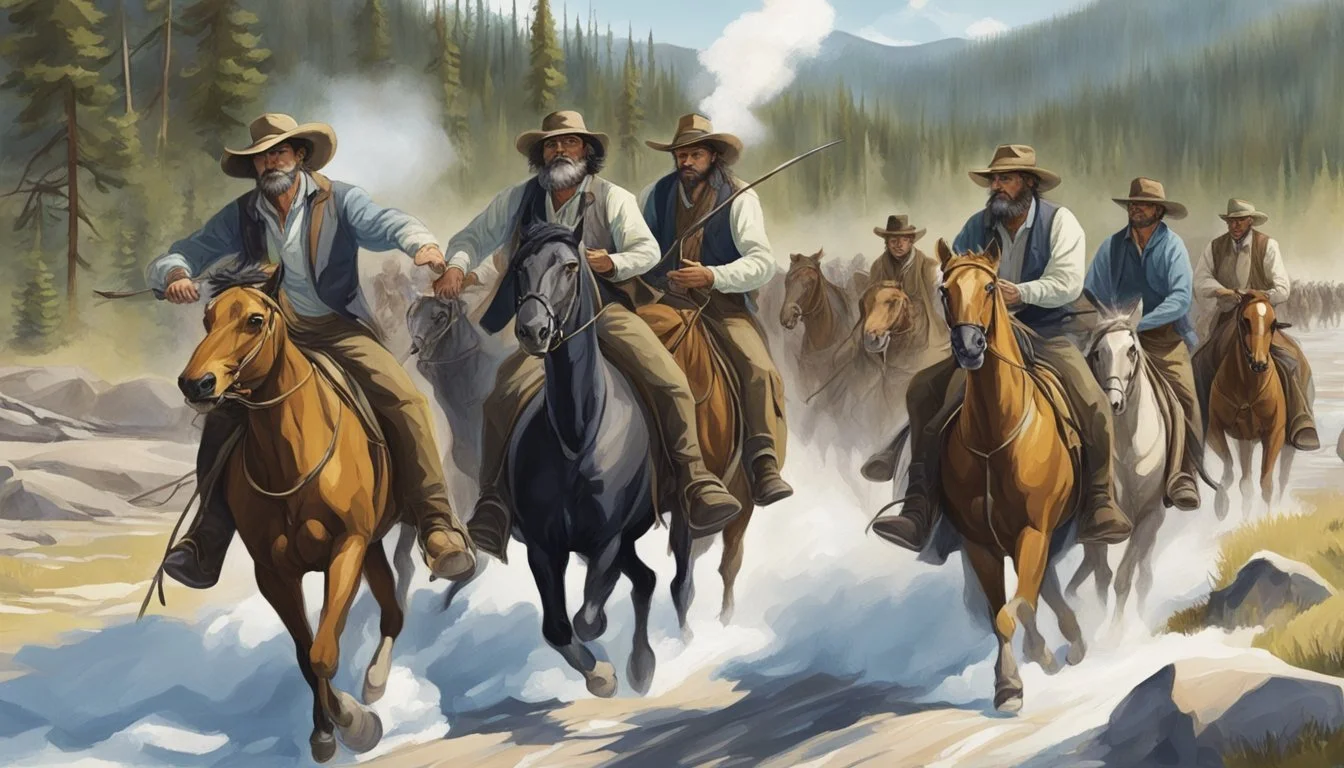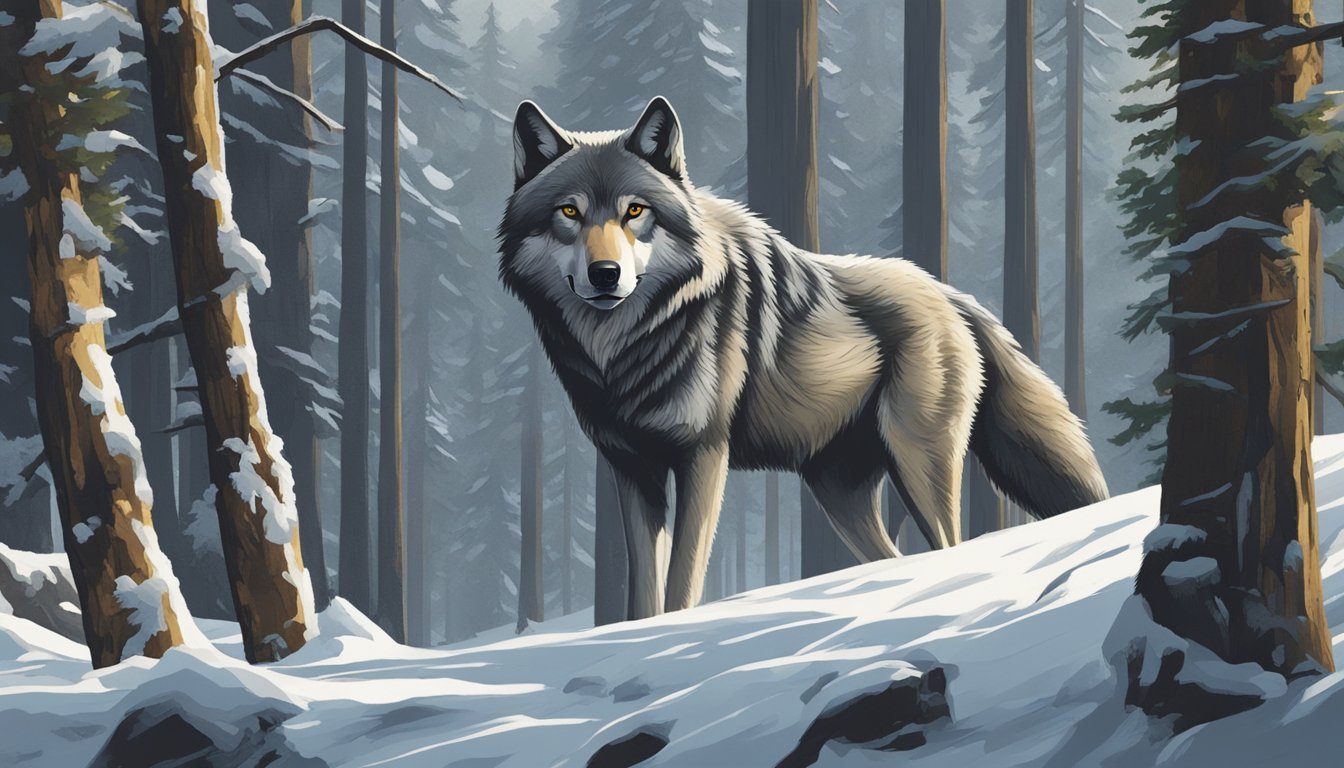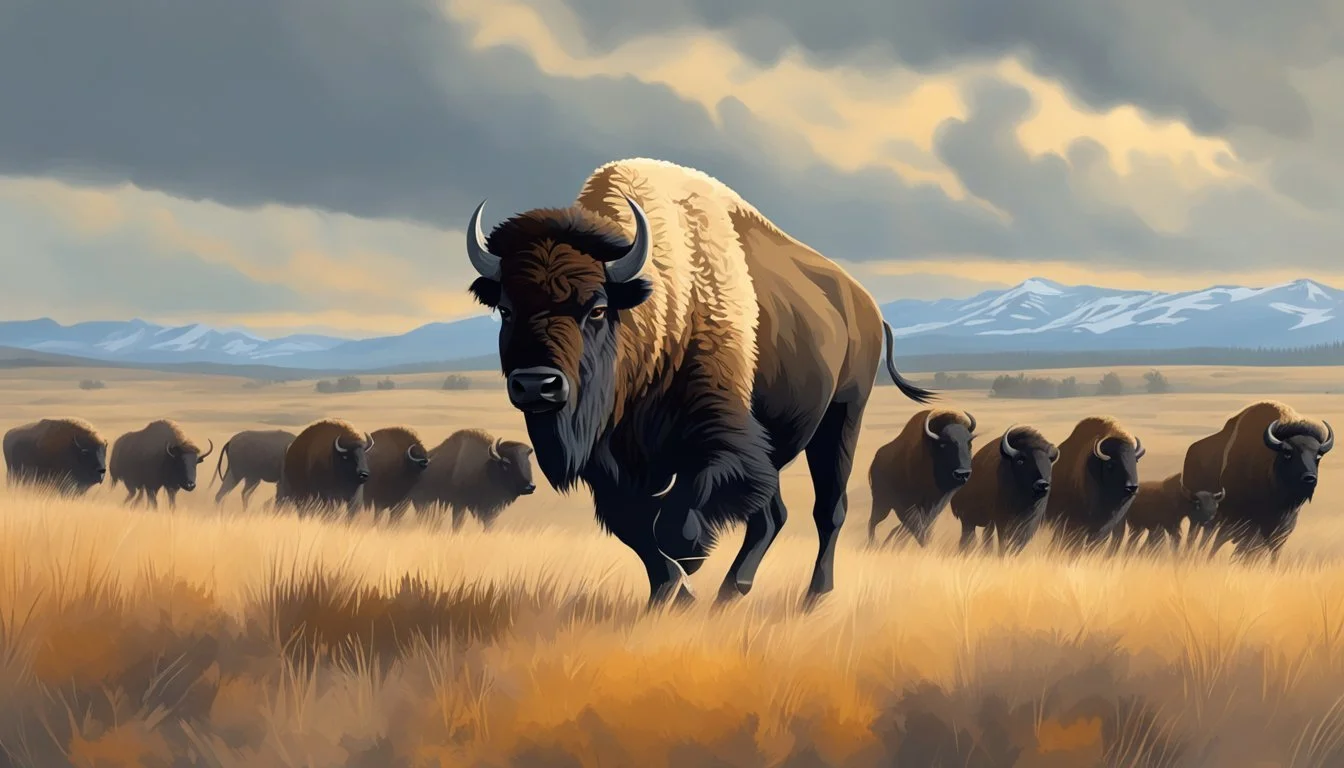Outsiders as Catalysts for Change in Yellowstone's Narrative
Shifting Perspectives on Conservation
Yellowstone's gripping narrative thrives on the tension between the Dutton dynasty and the forces that seek to challenge their power. Outsiders play a pivotal role in this struggle, injecting fresh dynamics into the story and propelling it forward. These external influences serve as catalysts for change, forcing the Duttons to adapt and evolve in their quest to maintain control over their empire.
From rival ranchers and land developers to Native American tribes reclaiming ancestral territories, various outsiders threaten the Duttons' grip on their land. Their presence introduces new conflicts and alliances, reshaping the landscape of power in Montana. As these outsiders clash with the established order, they expose vulnerabilities within the Dutton family and push the boundaries of their influence.
The introduction of these characters adds layers of complexity to Yellowstone's storyline. They bring diverse perspectives, motivations, and resources that challenge the status quo. This constant push and pull between insiders and outsiders creates a dynamic environment where change is inevitable, keeping viewers engaged and invested in the unfolding drama.
Historical Context of Yellowstone
Yellowstone National Park has a rich history spanning nearly 150 years. Its establishment marked a significant milestone in conservation efforts and shaped the development of the surrounding region, including Montana.
Founding Year and Early History
Yellowstone National Park was established on March 1, 1872, by President Ulysses S. Grant. It became the world's first national park, setting a precedent for conservation worldwide. The park's creation was largely driven by the Washburn-Langford-Doane Expedition of 1870, which explored the region and documented its unique geothermal features.
Initially, the park faced challenges in management and protection. The U.S. Army administered Yellowstone from 1886 to 1918, helping to combat poaching and vandalism. During this period, infrastructure development began, including the construction of roads and visitor facilities.
Yellowstone in the Early 20th Century
The early 1900s saw significant changes in Yellowstone. In 1916, the National Park Service was established, taking over management from the Army. This shift led to improved conservation practices and visitor experiences.
The 1920s and 1930s brought increased tourism to Yellowstone, facilitated by the growing popularity of automobile travel. The park's iconic lodges, including Old Faithful Inn, were constructed during this era.
Conservation efforts intensified, with programs to protect wildlife and preserve natural features. The reintroduction of wolves in the 1990s marked a pivotal moment in the park's ecological history, restoring balance to the ecosystem.
Yellowstone's Narrative Evolution
Yellowstone's storytelling has evolved to explore complex themes of power, legacy, and cultural identity. The series weaves together personal and political conflicts against the backdrop of Montana's rugged landscape.
Representation of the Dutton Family
The Dutton family stands at the heart of Yellowstone's narrative. John Dutton, the family patriarch, embodies the struggle to maintain control over their vast ranch. His children represent different facets of the family's legacy and future.
Taylor Sheridan's writing portrays the Duttons as a complex, often conflicted unit. Their interactions reveal deep-seated loyalties and rivalries. The show explores how family dynamics shape decision-making and influence the broader community.
The Duttons' story arc reflects changing attitudes towards land ownership and traditional values in the American West.
The Significance of Land and Legacy
Land plays a central role in Yellowstone's narrative, almost becoming a character itself. The Yellowstone Ranch symbolizes the Dutton family's power and heritage.
Conflicts over land rights drive much of the series' tension. These disputes highlight broader issues of development, conservation, and indigenous rights.
The show explores how the concept of legacy evolves across generations. It raises questions about the sustainability of traditional ranching lifestyles in a changing world.
Yellowstone's portrayal of land-related conflicts resonates with real-world debates about resource management and rural development.
Cultural Depictions of Relationships and Power
Yellowstone delves into the complex web of relationships that define power structures in Montana. The series explores connections between ranchers, politicians, developers, and Native American communities.
John Dutton's political ascension adds new layers to these dynamics. His role as governor blurs the lines between personal interests and public responsibility.
The show tackles sensitive topics like the treatment of Native Americans and the impact of gentrification on rural areas. These portrayals have sparked discussions about cultural representation in media.
Yellowstone's examination of power relationships reflects broader societal debates about influence, governance, and cultural identity.
The Duttons and Their Antagonists
The Dutton family faces numerous external threats to their ranch and way of life. These adversaries range from powerful corporations to local rivals, each presenting unique challenges to the Dutton dynasty.
Conflicts With Land Developers and Politicians
Market Equities emerges as a formidable opponent, seeking to transform Yellowstone land into a lucrative development. This corporation's aggressive tactics force the Duttons to leverage political connections and legal maneuvers to protect their property.
The Governor of Montana plays a crucial role in this power struggle. Their decisions can either bolster or undermine the Duttons' position. John Dutton's appointment as Livestock Commissioner adds another layer of complexity to these political battles.
Land developers continuously pressure the Duttons, offering vast sums for parcels of the ranch. These offers tempt some family members but ultimately strengthen the Duttons' resolve to maintain their legacy.
Alliances and Rivalries Within the Community
The Broken Rock Reservation, led by Thomas Rainwater, presents a unique challenge to the Duttons. While sometimes allies against external threats, their competing land claims create ongoing tension.
Local ranchers alternate between supporting and opposing the Duttons. Some view the family as protectors of the traditional ranching lifestyle, while others see them as power-hungry monopolists.
Law enforcement agencies have a complex relationship with the Duttons. Sheriff Donnie Haskell often turns a blind eye to their activities, creating a tenuous alliance that benefits both parties.
Neighboring landowners like the Beck brothers pose violent threats to the Duttons' dominance. These conflicts often escalate beyond legal boundaries, requiring swift and decisive action from the family.
Character Analysis in Yellowstone
Yellowstone's characters are complex, flawed individuals shaped by their environment and family history. Their multifaceted personalities drive the show's compelling narrative and power struggles.
The Complexity of John Dutton III
John Dutton III, portrayed by Kevin Costner, is the patriarchal center of Yellowstone. He's a rugged rancher with an unwavering commitment to preserving his family's legacy. John's character blends strength with vulnerability, often making morally ambiguous decisions to protect his land.
His relationships with his children are strained yet fiercely protective. John's evolution throughout the series reveals a man grappling with changing times and his own mortality. His tactical mind and deep-rooted connection to the land make him a formidable opponent to those threatening his empire.
John's character development showcases his struggle to adapt while maintaining his core values. This internal conflict adds depth to his persona and drives many of the show's central plotlines.
Beth Dutton's Ferocity and Vulnerability
Beth Dutton, played by Kelly Reilly, is a force of nature. Her sharp wit and ruthless business acumen make her a key player in the Dutton family's struggles. Beth's character is marked by a duality of fierce loyalty to her father and deep-seated emotional trauma.
Her vulnerability stems from past events, including a complicated relationship with her brother Jamie. Beth's romantic involvement with Rip Wheeler adds another layer to her character, revealing a softer side beneath her hardened exterior.
Beth's development throughout the series showcases her journey towards healing while maintaining her edge. Her complex personality and unpredictable nature keep viewers engaged and invested in her story arc.
Kayce Dutton's Inner Struggles
Kayce Dutton, portrayed by Luke Grimes, embodies the conflict between family loyalty and personal identity. As a former Navy SEAL, Kayce brings a unique skillset to the Dutton ranch. His character grapples with balancing his roles as a father, husband, and son.
Kayce's relationship with his Native American wife, Monica, adds cultural complexity to his character. His inner turmoil often manifests in difficult choices between his Dutton heritage and his desire for a simpler life.
Throughout the series, Kayce's character development revolves around finding his place within the family dynamics and the larger community. His journey of self-discovery and reconciliation with his past drives significant plot points.
Rip Wheeler's Loyal and Rugged Persona
Rip Wheeler, played by Cole Hauser, is the epitome of unwavering loyalty. As the Dutton ranch foreman, Rip's dedication to John Dutton and the family is absolute. His rough exterior belies a complex character with a troubled past.
Rip's relationship with Beth adds depth to his character, revealing a gentler side beneath his tough demeanor. His role as John's right-hand man puts him at the center of many conflicts, showcasing his resourcefulness and determination.
Rip's character development throughout the series explores themes of belonging and redemption. His journey from orphaned ranch hand to trusted family member is a central element of Yellowstone's narrative.
Cultural and Social Themes in Yellowstone
Yellowstone explores complex societal issues through its narrative, characters, and setting. The show grapples with the clash between traditional values and modern pressures while highlighting diverse perspectives.
Conservative Values and Modern Challenges
Yellowstone portrays a conservative ranching culture facing threats from outside forces. The Dutton family embodies traditional Western values, emphasizing land ownership, family legacy, and self-reliance. Their struggle to maintain control of their vast ranch reflects broader conflicts in rural America.
The show depicts tensions between preservation and development. Characters debate the merits of maintaining historical ways of life versus embracing economic progress. This conflict manifests in battles over land use, resource extraction, and tourism.
Generational divides within the Dutton family showcase evolving attitudes. Younger characters often question longstanding practices, creating friction with older, more traditional family members.
Native American Characters and Representation
Yellowstone features prominent Native American characters, offering a more nuanced portrayal than many Western narratives. These characters have agency and complex motivations, moving beyond stereotypical depictions.
The show explores ongoing issues facing Indigenous communities, including:
Land rights disputes
Cultural preservation efforts
Economic challenges
Political representation
Relationships between Native and non-Native characters are multifaceted. While conflicts arise, the series also depicts alliances formed across cultural divides when facing common threats.
The Influence of Hollywood on Western Mythos
As a neo-Western, Yellowstone both draws from and subverts Hollywood's traditional Western genre conventions. The show maintains familiar elements like rugged landscapes and cowboy imagery while updating themes for a modern audience.
Yellowstone's popularity has reignited interest in Western-themed entertainment. This resurgence influences public perceptions of ranch life and the American West.
The series blends romanticized notions of frontier independence with gritty realism. It portrays the challenges of maintaining a large ranch in the 21st century, including financial pressures and changing land use policies.
Production and Reception
Yellowstone has become a cultural phenomenon, garnering critical acclaim and a massive audience. The show's success has reinvigorated interest in contemporary Western dramas.
Critical Acclaim and Audience Response
Yellowstone premiered on Paramount Network to record-breaking viewership. The show's debut attracted 2.8 million viewers, setting a new benchmark for the network. Subsequent seasons have consistently improved upon these numbers.
Critics have praised the series for its high production values and compelling performances. Kevin Costner's portrayal of John Dutton has been particularly lauded, earning him widespread recognition.
Taylor Sheridan's creation has resonated strongly with audiences, especially in rural America. The show's exploration of land rights, family dynamics, and political intrigue has struck a chord with viewers.
Yellowstone's Impact on Contemporary Western Genre
Yellowstone has revitalized the Western genre for modern television. Its success has paved the way for other Western-themed series and spin-offs.
The show's innovative use of flashbacks adds depth to character backstories and enriches the overall narrative. This storytelling technique has become a hallmark of the series.
Season 5 further cemented Yellowstone's status as a cultural touchstone. It expanded the show's scope, delving deeper into political themes and family conflicts.
Yellowstone's influence extends beyond television, impacting tourism and local economies in filming locations. The series has sparked renewed interest in ranch life and the American West.
Exploring Yellowstone's Prequels and Spin-Offs
Yellowstone's prequels and spin-offs expand the Dutton family saga across different time periods. These shows provide deeper insights into the origins of the Dutton ranch and the challenges faced by earlier generations.
The Background of James Dutton and Early Pioneering
James Dutton, the patriarch of the Dutton family, is a central figure in the Yellowstone prequels. His journey is depicted in "1883," which chronicles the family's treacherous westward expansion. The series showcases the harsh realities of 19th-century frontier life.
James faces numerous obstacles as he leads his family across the Great Plains. From dangerous river crossings to encounters with Native American tribes, the show highlights the perils of pioneering. These experiences shape the Dutton family's resilience and determination.
The prequel also explores James's motivations for seeking a new life in Montana. His decisions lay the foundation for the Dutton legacy that continues in the main Yellowstone series.
Charting the Influence of Prequels on Main Narrative
The prequels significantly impact the main Yellowstone narrative by providing context for the Dutton family's deep-rooted connection to their land. "1923" follows the next generation of Duttons, bridging the gap between James's era and the present day.
This series explores how the family navigates challenges like Prohibition, the Great Depression, and the aftermath of World War I. These historical events shape the Duttons' approach to preserving their ranch and legacy.
The prequels also introduce key characters whose actions and decisions echo through generations. By understanding these ancestral figures, viewers gain new perspectives on the motivations and behaviors of characters in the main series.
The Role of Outsiders as Catalysts
Outsiders play a pivotal role in shaping the narrative of Yellowstone, bringing new challenges and opportunities to the Dutton family's Montana ranch. These external forces introduce fresh dynamics that impact the delicate balance of power in the region.
Introduction to New Antagonists and Allies
Yellowstone's storyline thrives on the introduction of outsiders who become key antagonists or unexpected allies. Market Equities, a powerful corporation, emerges as a formidable adversary seeking to develop the pristine land surrounding the Dutton ranch. Their arrival sparks intense conflicts and forces the Duttons to reassess their strategies.
Thomas Rainwater, leader of the nearby Native American reservation, represents both an antagonist and a potential ally. His complex relationship with the Duttons adds layers of intrigue to the plot. These outsiders challenge the status quo, pushing the Duttons to adapt and evolve in their fight to preserve their legacy.
External Influences on the Dutton Family Dynamics
The presence of outsiders significantly impacts the internal dynamics of the Dutton family. As external threats mount, family members are forced to confront their differences and unite against common enemies. This pressure often leads to unexpected alliances and shifts in loyalty within the ranch.
The arrival of Roarke Morris, a charming hedge fund manager, not only threatens the ranch but also creates personal complications for Beth Dutton. Such external influences test family bonds and individual loyalties, catalyzing character growth and development.
Outsiders also bring new perspectives to the traditional ranching lifestyle. Their presence highlights the clash between old and new ways of life in Montana, forcing the Duttons to reconsider their place in a changing world.
Yellowstone Ranch: A Symbol of the Duttons' Struggle
The Yellowstone Ranch embodies the Dutton family's fight to preserve their way of life against encroaching outside forces. This vast property serves as both a physical and metaphorical battleground for the ranching family's ongoing conflicts.
The Physical and Symbolic Significance of the Ranch
Yellowstone Ranch spans an estimated 776,000 acres in Montana's Paradise Valley. Its sheer size rivals that of Rhode Island, highlighting the immense scale of the Duttons' holdings.
The ranch represents more than just land ownership. It symbolizes the family's deep-rooted connection to their heritage and the traditional ranching lifestyle.
As a working cattle operation, the property showcases the day-to-day realities of modern ranching. It serves as a stark contrast to the encroaching urban development and changing economic landscape.
The ranch's picturesque setting near Yellowstone National Park adds to its allure and value. This prime location attracts wealthy outsiders and developers seeking to capitalize on the area's natural beauty.
Challenges to the Yellowstone Ranch's Existence
External pressures constantly threaten the Duttons' hold on their ancestral lands. Corporate interests eye the property for its development potential, aiming to transform it into lucrative real estate ventures.
Wealthy newcomers drive up property values, making it harder for longtime residents to maintain their ranching operations. This influx strains local resources and alters the community's character.
The ranch faces economic challenges as traditional cattle ranching becomes less profitable. The Duttons must adapt their business practices to stay afloat in a changing market.
Political maneuvering and land disputes further complicate the family's efforts to retain control. They must navigate complex legal and regulatory landscapes to protect their interests.






